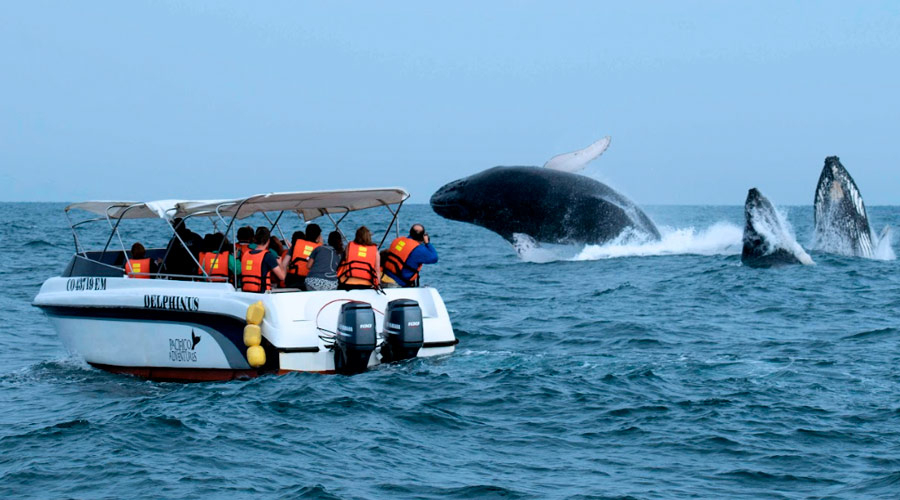
He Ministry of Foreign Trade and Tourism (Mincetur) reported today that, during the whale watching season, the beaches of northern Peru (Piura and Tumbes) would benefit from the arrival of 11,000 national and foreign tourists, achieving an economic impact of S/18 million.
“Whale watching is a constantly growing tourist activity that attracts observers worldwide. It is one of the most impressive and unforgettable experiences of life. Peru invites all Peruvians and foreigners not to miss this once-in-a-lifetime natural spectacle,” said Vice Minister of Tourism Madeleine Burns.
As recalled, the regions of Piura and Tumbes are the best tourist destinations to appreciate the transit of giant cetaceans. Mainly on the beaches of El Ñuro, Máncora, Cabo Blanco, Los Órganos and Punta Sal. At the same time, visitors can also see sea lions, dolphins and sea turtles that approach the boats.
It is important to mention that around 66.8% of the people who observe this activity are doing it for the first time. Among the more than 30 species of whales that exist in the world, the humpback whale stands out on the beaches of Piura and Tumbes.
Chileans get to see whales in the north
According to the General Directorate of Research and Studies on Tourism and Crafts (DGIETA) of the Vice Ministry of Tourism, it is expected that, of the total number of observers that would arrive at the northern beaches, 89.4% would be nationals and 10.6% foreigners.
International visitors would come mainly from Chile (22%) and Spain (18.3%). In the case of nationals, they would be from Lima and Callao (57%), La Libertad (5.7%) and Lambayeque (4.7%). The whale watcher would make an average cost per person of S/900 and a stay of 4 nights. It should be noted that 4.5% would be represented by hikers (visitors of the day).
In the case of national observers, 37.5% would make this trip as a couple, 30.3% in a direct family group, 23.5% would travel alone, 5.8% with friends or relatives without children, and 2 .9% with friends or relatives with children. The main reason for traveling would be vacations, recreation or leisure (65.5%) and visiting family/friends (29.3%).
Regarding the foreign observer, 41.5% would make this trip with their partner, 28.3% alone, 18.2% in a direct family group, 11.6% with friends or relatives without children and 0.4 % with friends or relatives with children. The main reason for traveling would be for vacation, recreation or leisure (79.1%) and visiting family / friends (15.9%).
Source: Larepublica
Alia is a professional author and journalist, working at 247 news agency. She writes on various topics from economy news to general interest pieces, providing readers with relevant and informative content. With years of experience, she brings a unique perspective and in-depth analysis to her work.












